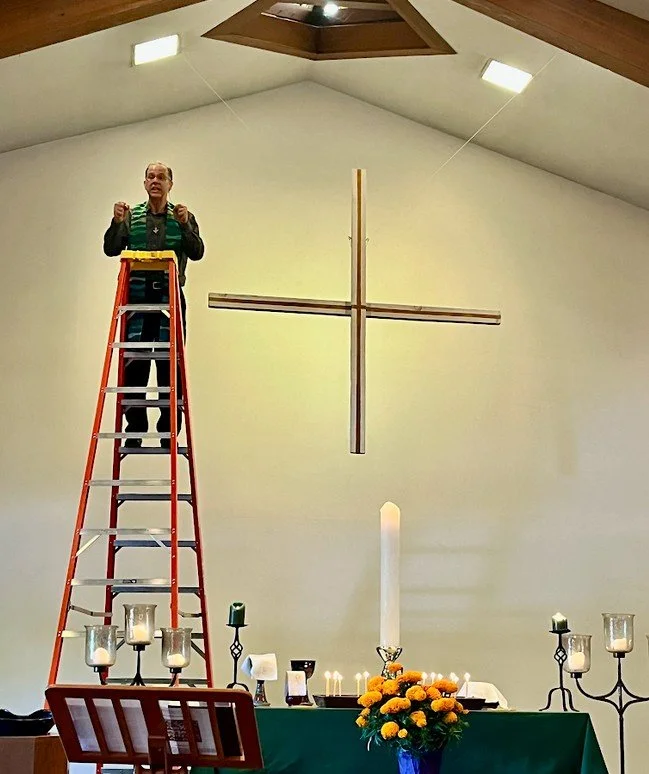On Being A Saint: Seeing The World From A Different Perspective
Rev. Erik Swanson
November 2, 2025
You can watch the entire sermon here.
I’ve often noticed that in the Protestant church, we tend to shy away from talk about saints or the celebration of them. Yet I believe the saints hold deep wisdom and powerful examples that we can learn from if we take another look. The stories of the saints are not just Catholic stories — they are Christian stories. Many of these saints lived and ministered long before the divisions in the church, and their devotion belongs to all of us.
The Saints The World Differently
When I think of the saints, I think of St. Francis of Assisi, who loved God so deeply that he even preached to the animals. I think of St. Hildegard of Bingen, whose teachings about the greening and growing of the world connect faith and creation in a profound way. I think of St. Teresa of Avila, a woman of prayer and courage whose mystical writings like The Interior Castle continue to inspire people centuries later. And I think of St. John of the Cross, who gave thanks to God even when sent to live in a ruined chapel open to the snow. These were human beings who saw the world differently — through the eyes of Spirit rather than the eyes of comfort or convention.
Seeking A New Vantage Point
That same theme appears in the story of Zacchaeus. He was an outcast, a tax collector despised by his community. When he couldn’t see Jesus through the crowd, he ran ahead and climbed a tree. That simple act of seeking a new vantage point changed everything. Jesus saw him and invited himself to Zacchaeus’ home. In that encounter, Zacchaeus experienced a complete transformation of heart and perspective.
Learning To See From A New Height
For me, that image of climbing the tree is a metaphor for learning to see differently. The saints, like Zacchaeus, were people who saw the world from a new height — through love, humility, and unity instead of fear and judgment. Jesus continually calls us to see through the eyes of Spirit. Racism and other systems of oppression distort how we see one another; until we recognize those distortions, we cannot move beyond them. The saints remind us that it is possible to change our vision — to see the belovedness of every person as God sees it.
Getting a new perspective is important which is why I delivered this sermon atop a ladder and had the congregation change where they were sitting.
Standpoint Theory
Recently I’ve heard about standpoint theory, which suggests that our perspective on the world is shaped by our identity and relationship to power. Feminist standpoint theory goes further, saying that those who are marginalized often see the world more clearly because they have had to notice what privilege ignores. This connects deeply to our call as people of faith — to remove our blinders, to see reality as it truly is, and to recognize all people as children of God.
Transforming Our Perspective
Transformation is the second great theme that unites Zacchaeus and the saints. Zacchaeus’ declaration that he would repay everyone fourfold was not a small act; it was a radical turning of his entire life. Francis cast off his clothes to symbolize leaving behind wealth and privilege. Teresa reformed her order to embrace simplicity and service. Each of them allowed God to utterly transform their perspective, their purpose, and their way of living.
What Do We Need To Transform
The invitation for us is the same. What transformations must we undergo to live into God’s vision of justice, compassion, and unity? Can we let go of comfort, pride, or indifference to follow God’s call more faithfully? My prayer is that, like Zacchaeus and the saints, we may climb the tree, see the world anew through the eyes of Spirit, and allow that vision to transform us — so that our lives reflect the radical love and faithfulness God longs for us to embody. Amen.


